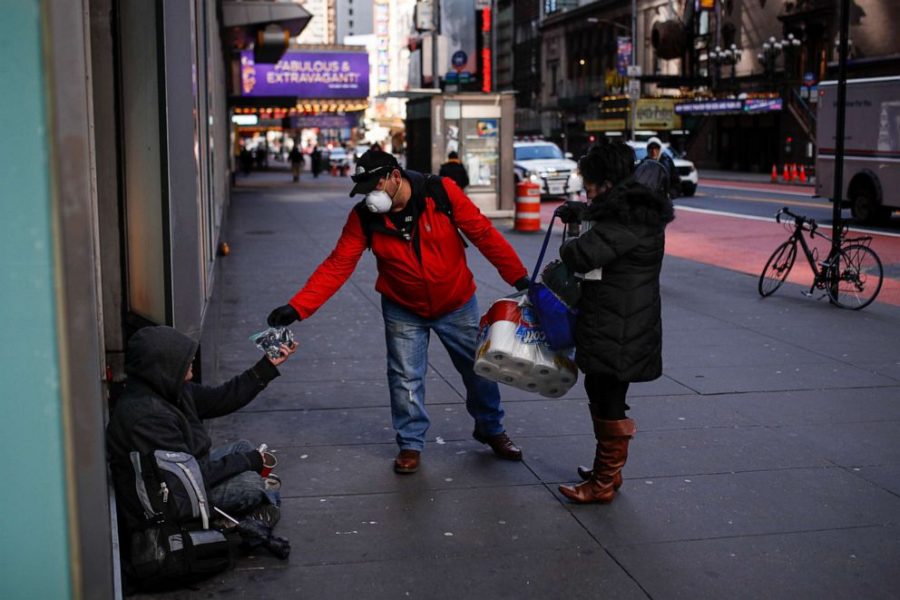How COVID Has Affected the Homeless
“The only thing worse than knowing that you are going to spend another day stuck under the same roof is not knowing that.” John Oliver
In a district as privileged as ours, it is easy to take for granted the roof over our heads and the food in our mouths. We are a country of roughly 330 million people, and in July, an estimated 567,715 people were without shelter, a number that has only grown since.
Though millions can’t afford to pay rent, they are allowed to stay in their homes after mandates from the government. The impacts of homelessness on health and well-being are immense, and COVID has only served to complicate things even further for these communities.
What health risks are people on the streets facing? Primarily, their exposure to the elements which makes them vulnerable to respiratory diseases, especially COVID-19. In March, New York announced that 17 homeless people were sick in 12 different shelters.
The virus has placed many homeless people in a difficult predicament, as infected shelters are often the only place where they can receive cover. In an article with Georgetown Law, the founder of Beauty 2 the Streetz, Shirley Raines, said, “Social distancing is a luxury homeless people can’t afford.”
Shelters are notoriously overcrowded, and it is very difficult to keep everyone six feet apart. Additionally, the lack of access to facilities means that the houseless often can’t protect themselves and others by washing their hands regularly.
The city of Phoenix, Arizona has set up socially-distanced squares full of tents and resources where homeless people can stay. However, according to camp resident Elisheyah who spoke to USA Today, “We have been, like, ignored. There’s no safety. Nothing to guarantee you can be safe out here.”
Arizona exempts houseless people from the directive to stay at home along with eleven other states, but besides that, the rest of the country barely acknowledged the houseless and how they should handle the current situation.
In the first week of August, 490 out of the 7,400 houseless people tested positive, and nine died. That is a 6% positivity rate and a 1.8% death rate, and that’s only where testing was available. Most of the houseless population do not have healthcare, so tests are often not an option.
COVID-19 testing for homeless people was certainly given some attention early on by the federal government. Earlier in the year, Congress gave over $4 billion towards programs that attempted to help the houseless, but four months later, the majority of that money never made it to local communities.
New York City is the only major city that has tried to assess the number of cases in homeless people; the results were very unsettling. The mortality rate for the city’s homeless population was 67% higher than the mortality rate of the average population, and in early August there were 104 deaths out of 88,000.
Not only that, the food supply for the houseless is being stretched thin. Many people have lost their jobs due to the COVID-19 health crises, so when soup kitchens open, the line is drastically longer because now it is a mix of jobless and houseless.
Juan de la Cruz told Business Insider, “We went from serving 720 meals to overnight to having to get over 1,100 meals,”
The world is in turmoil, but taking a moment to be grateful for the food and shelter that we have can bring a sense of peace. If you’re looking to provide those necessities for our community, here are some resources to check out:
Houseless Shelters, The Salvation Army USA

Liron is a senior who is stoked to be working at the Banner again for her fourth year (second year as communications officer)! Outside of writing for the...


